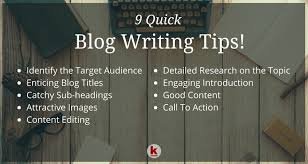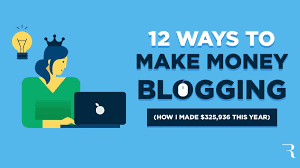Starting a blog can be one of the most rewarding decisions you make, whether it’s for personal expression, building a community, or growing a business. However, if you’re new to blogging, the process can feel overwhelming. From selecting a blogging platform to choosing your niche, there are many steps involved. Don’t worry – we’ve got you covered! This step-by-step guide will walk you through the essentials of blogging so you can launch a successful blog that resonates with your audience.
Step 1: Choose Your Blogging Niche
One of the first and most important decisions you’ll make when starting a blog is selecting a niche. Your niche is the specific topic or industry your blog will focus on. It’s crucial to choose something that you are passionate about and have knowledge of, as this will make creating content more enjoyable and sustainable in the long term.
Some popular blogging niches include:
- Health & Wellness
- Personal Finance
- Travel
- Food and Recipes
- Lifestyle
- Technology
- Education
When selecting your niche, consider the following questions:
- What topics excite you?
- What are people searching for online? (Hint: Use tools like Google Trends to explore popular topics)
- Is there a gap in the market where your blog could provide unique value?
Your blog’s success hinges on finding a niche that you’re passionate about and that has an audience eager for the content you’ll create.
Step 2: Select a Blogging Platform
Once you’ve identified your niche, the next step is selecting a blogging platform. This is where your blog will live on the internet, and it’s essential to choose one that suits your needs. Here are some of the most popular blogging platforms:
- WordPress.org: WordPress is a powerful and flexible platform. It’s a great choice if you want full control over your website’s design, features, and functionality. Note that WordPress.org requires hosting, so you’ll need to purchase a hosting plan separately.
- WordPress.com: WordPress.com is a hosted version of WordPress. It’s easier to use but offers less customization than WordPress.org.
- Blogger: Owned by Google, Blogger is a free platform that is simple to set up but doesn’t offer as many customization options as WordPress.
- Wix: Wix is a drag-and-drop website builder that’s ideal for beginners who want to get a blog online quickly and easily. However, customization options can be limited.
For most serious bloggers, WordPress.org is the best option due to its scalability, flexibility, and the wealth of plugins and themes available.

Step 3: Choose a Domain Name and Hosting
Once you’ve selected a blogging platform, it’s time to pick a domain name and hosting service. Your domain name is your blog’s address on the internet (e.g., www.yourblogname.com). It should be short, memorable, and related to your blog’s niche.
When choosing a domain, consider these tips:
- Keep it short and easy to spell.
- Avoid numbers and hyphens.
- Make it brandable.
Next, you’ll need to choose a hosting provider. Hosting is where all your website’s files are stored. Some popular hosting providers for WordPress include:
- Bluehost
- SiteGround
- HostGator
- WP Engine
Many hosting providers offer one-click WordPress installations, making it easier than ever to get started.
Step 4: Customize Your Blog’s Design
Now that your blog is up and running, it’s time to customize its appearance. This is the fun part where you get to create a look and feel that reflects your brand and resonates with your target audience. WordPress offers thousands of free and premium themes, so you can choose one that suits your blog’s style.
When customizing your blog design, keep these principles in mind:
- User Experience (UX): Make sure your site is easy to navigate and that your visitors can find what they’re looking for quickly.
- Mobile Responsiveness: Ensure your blog is optimized for mobile devices, as a significant portion of web traffic comes from mobile.
- Minimalism: Keep the design simple and clean to ensure your content stands out.
Plugins like Elementor or WPBakery can help you easily drag and drop elements to create a beautiful layout without needing coding skills.

Step 5: Create High-Quality Content
Now that your blog is set up, it’s time to start creating content. The most important aspect of any successful blog is valuable, engaging, and original content. Whether you’re writing blog posts, creating videos, or sharing infographics, ensure your content is relevant to your audience and provides them with useful information.
Here are some content tips to keep in mind:
- Write for your audience: Always keep your readers in mind when writing. What do they want to know? What questions do they have?
- Use attention-grabbing headlines: The headline is the first thing people see, so make it compelling. A good headline will encourage clicks and shares.
- Use visuals: Blog posts with images, videos, and infographics tend to perform better. These elements can help break up the text and make your post more engaging.
- Be consistent: Set a regular posting schedule and stick to it. Whether you post once a week or twice a month, consistency is key to building an audience.
Step 6: Promote Your Blog
After publishing your content, it’s time to get it in front of an audience. Without promotion, even the best blog posts may go unnoticed. Here are some effective ways to promote your blog:
- Social Media: Share your blog posts on social media platforms like Facebook, Twitter, Instagram, and Pinterest. Each platform has its own strengths, so find the ones that resonate with your audience.
- SEO (Search Engine Optimization): Optimize your blog posts for search engines to improve your chances of ranking on Google. Focus on keyword research, on-page SEO (like using relevant keywords in titles and headings), and obtaining backlinks from other sites.
- Email Marketing: Build an email list from day one. Encourage visitors to subscribe to your blog so you can notify them whenever you post new content.

Step 7: Monitor and Improve
As you continue to blog, track your blog’s performance using tools like Google Analytics. Pay attention to which posts perform well and which ones need improvement. Over time, you’ll get a better understanding of what your audience loves, and you can adjust your content strategy accordingly.
Conclusion
Starting a blog can be an exciting and fulfilling journey. By following these seven steps – choosing your niche, selecting a platform, setting up your blog, creating quality content, and promoting your blog – you can set yourself up for success. Remember, blogging is a long-term game. Stay patient, keep learning, and enjoy the process!
Related Tags:
- Blogging for Beginners
- How to Start a Blog
- Blogging Tips
- WordPress Blogging Guide
- Blog Setup Guide
- Blogging Basics
- SEO for Bloggers
- Content Creation Tips
- Blog Promotion Strategies
- Start Your Blog Today













